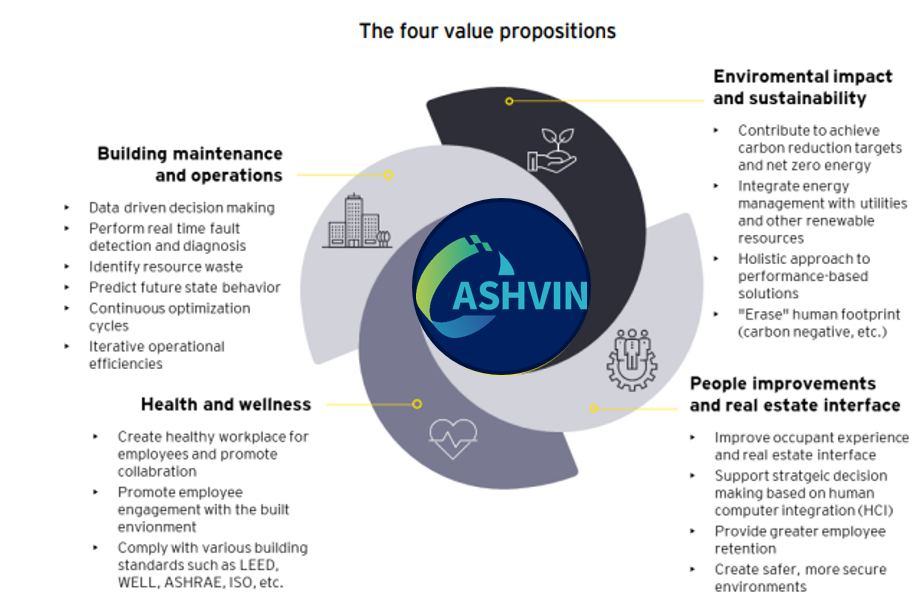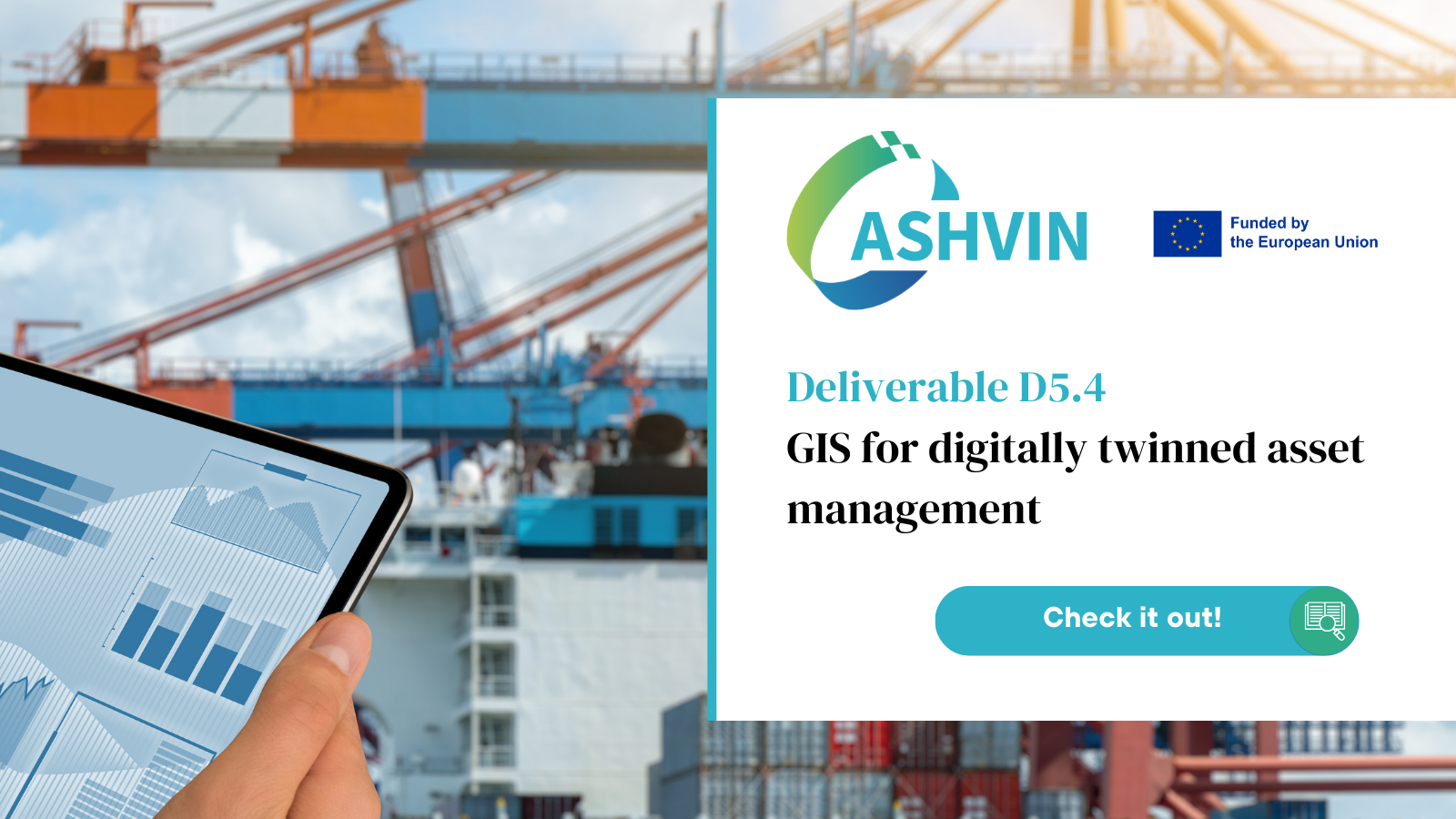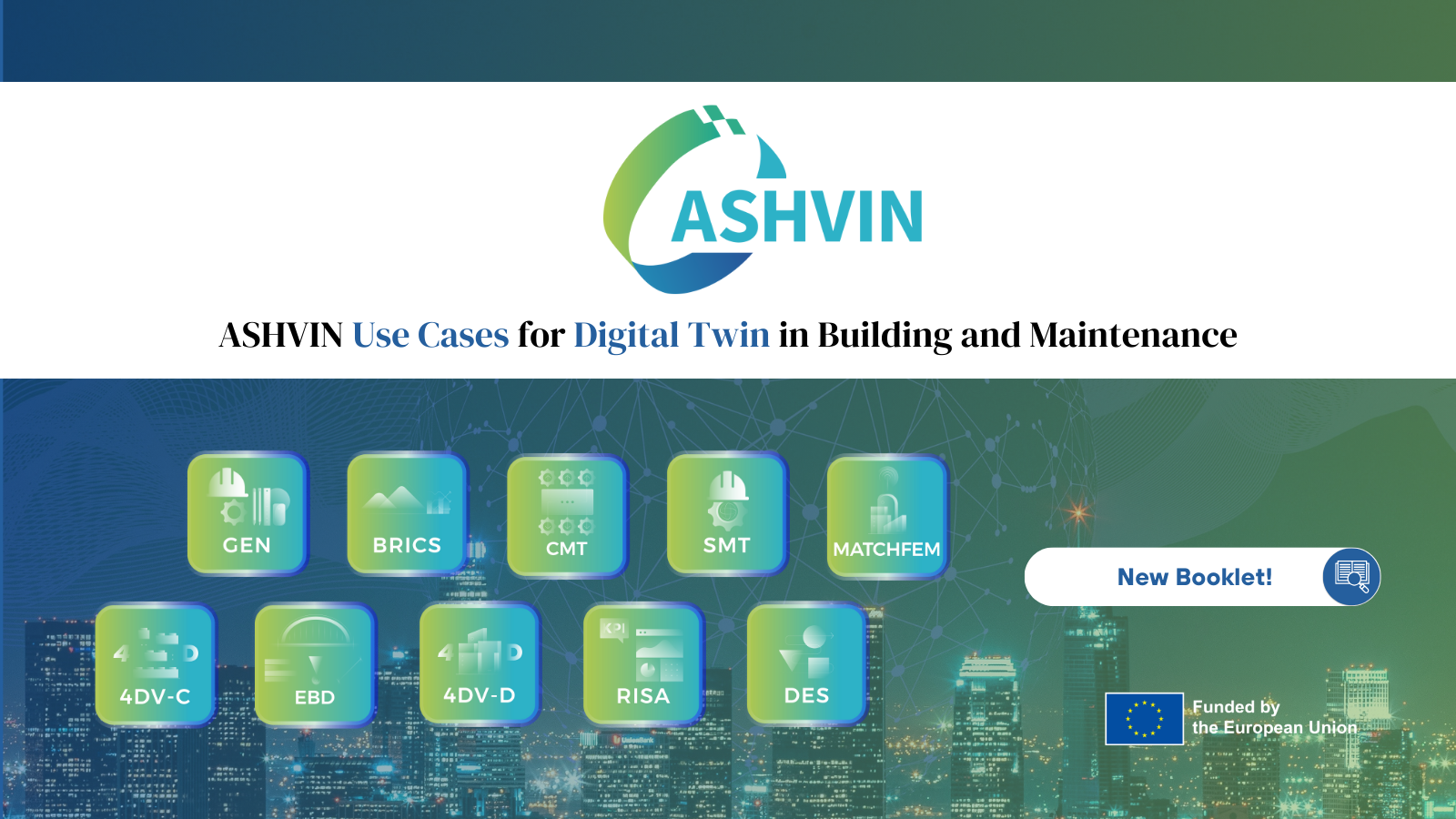Value proposition usually refers to why customers recognize and are willing to buy the products or services of a particular enterprise, that is, what value the products or services of an enterprise can bring to customers. To this extent, the value proposition determines the positioning and integration of the strategic direction, operation structure and overall business process of the enterprise.
The report presents ASHVIN’S value proposition which is based on the following 4 categories listed below in Figure1 with the same objective of optimizing collective performance.

The adoption of a digital twin can reduce operating costs by up to 35%, while at the same time decreasing carbon emissions, ensuring a healthier workplace and improving the user experience. ASHVIN will be able to accelerate corporate evolution by, incorporating sustainable design to drive operational excellence. This workplace transformation has identified four value propositions that address industry challenges and will generate cost savings.
Building maintenance and operations
For ASHVIN one of the tangible impacts of a digital twin would be in the operations and maintenance phase of the building’s life cycle. According to a joint study by Harvard Business Review and Microsoft, 66% of global organizations identify energy management as the prime reason for adopting smart technologies. Further, 72% of executives stated that their prime business goal was to reduce facility inefficiencies and operational costs. The predictive nature of an ASHVIN tool can reduce maintenance costs by its ability to collect, monitor and analyse real time data while utilizing ML models to mitigate future risk. Installing sensors throughout a building can automatically enable predictive maintenance protocols, which are deployed as an alternative to traditional maintenance schedules.[1]
Environmental impact and sustainability
Nowadays solutions that reduce resource usage are increasing in value, not only because of the potential for cost savings, but also due to the social responsibility to address climate change impact. Thus, in ASHVIN by leveraging digital twins, IoT sensors and IoA augmentation; owners and facility managers can reduce a building’s environmental footprint by decreasing energy consumption from various components and systems. These optimization capabilities not only capture significant energy savings, but will also enable companies with large carbon footprints to drastically reduce their emissions and global impact.
Health and Safety
According to International WELL Building Institute (IWBI),[2] “our physical environment impacts our health more than lifestyle, medical care and genetics”. As we spend 90% of our time indoors, the built environment leads to a profound impact on people’s health, wellbeing, happiness and productivity. A survey of employees working in WELL-certified office buildings reported that 92% of the respondents enjoyed a positive effect on health and wellbeing. The technology used in ASHVIN, such as digital twins, can have a comforting effect for professionals in the design, construction and operations sectors, which are high-risk industries putting people at the heart of decisions.
People improvements
Building owners can also enhance the security for their employees and assets of construction sites by installing automated security systems as part of the digital twin. AI image recognition in the IoT would monitor areas that are usually monitored by security personnel. Threat detection is substantially improved and no longer requires as large of a security team. Companies can reduce labour costs pertaining to security up to 50% by leveraging a digital twin model.
Do you want to know more about our project? You can go through of all our public deliverables from here and follow and share your opinion with us through our LinkedIn, Twitter or YouTube communities.
[1]*Digital twin: the Age of Aquarius in construction and real estate (scl.org.au)





